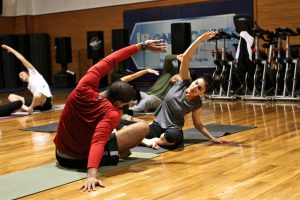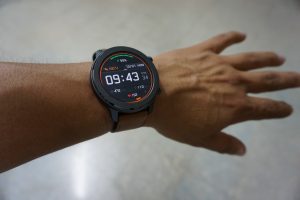Race Day Tips for Triathletes: Physical and Mental Preparation for Success
Race day is the culmination of all your training, and proper preparation is essential to ensure a smooth, focused experience. A well-executed race day strategy—from physical checks and mental readiness to efficient transitions and fueling—will help you perform at your best. This post covers everything you need to prepare for race day, including physical and mental tips, course familiarity, equipment checks, and race-day routines.
1. Physical and Mental Preparation
The days leading up to the race are about maintaining both physical readiness and a positive mental state. Here’s how to prepare your body and mind for the big day.
Get a Good Night’s Sleep: Prioritize sleep in the nights leading up to the race. The night before the race can sometimes be restless due to nerves, so aim for high-quality rest two nights prior to build a strong foundation.
Fuel with a Proper Breakfast: On race morning, stick to a breakfast you’ve practiced with in training. Include easy-to-digest carbs, a bit of protein, and hydration. Examples include oatmeal with banana, a bagel with peanut butter, or a smoothie with fruit and protein powder.
Mental Preparation and Positive Visualisation: Spend a few minutes visualising the race. Imagine yourself successfully completing each leg, managing challenges calmly, and crossing the finish line strong. Positive visualisation helps build confidence, while deep breathing can calm any pre-race nerves.
2. Understanding the Course
Knowing the race course is vital for both strategy and mental preparation. Familiarize yourself with each leg to avoid surprises.
Review the Course Map: Study the course map in advance, noting key landmarks, elevation changes, and aid stations. For the swim, identify the direction of turns and sighting markers; for the bike and run, locate challenging hills, sharp turns, and hydration stops.
Pre-Race Briefing: Attend the race briefing, usually held the day before, for essential updates. Organizers will cover course conditions, transition details, safety rules, and emergency procedures, so it’s crucial to listen and ask questions if anything is unclear.
Visualize Transition Areas: Visualise your transitions (T1 and T2) and plan your route through each. Walk through the transition area during check-in to familiarise yourself with the flow and locate your bike and gear.
3. Race Day Kit Checks
A thorough kit check is essential to ensure you have everything you need and prevent any last-minute issues.
Kit Checklist:
- Tri Suit: Make sure it fits well and is comfortable for all three legs of the race.
- Race Belt: Attach your race bib to your race belt for quick and easy fastening.
- Timing Chip on Left Ankle: Place your timing chip on your left ankle to avoid interference with the bike chain. Double-check it’s secure.
- Watch or GPS Device: Ensure it’s fully charged and set up to track each leg. Confirm it’s in triathlon mode if available.
Nutrition and Hydration: Pre-pack your nutrition, including gels, bars, or electrolyte tablets, and place them in your transition bag or bike top tube. Double-check you have enough for each leg, and make sure it’s easily accessible during the race.
4. Race Check-In and Collecting Essentials
Check-in procedures vary by race, so arrive early to avoid rushing and missing important steps.
Collect Your Bib and Timing Chip: Visit the registration desk to pick up your race bib, timing chip, and any other race materials. Verify your race number and chip number for accuracy.
Secure Your Timing Chip: Your timing chip records your splits and final time, so ensure it’s securely fastened on your left ankle.
Race Wristband and Bags: Some races issue a wristband for entry to transition areas. You may also receive colored bags for different legs of the race—make sure each bag is packed with the essentials for that leg (e.g., run shoes, gels).
5. Transition Recce and Gear Organisation
An organised transition area is critical for smooth, efficient transitions. Follow these steps to set yourself up for success:
Bike Racking and Transition Space: Rack your bike in the designated spot and make sure it’s stable. Set up your transition gear neatly below or beside your bike so you can quickly grab what you need.
Locate Your Bike with a Marker: Choose a visual marker near your bike rack, such as a distinctive banner or tree, to quickly locate your bike during transitions.
Helmet Check and Positioning: Place your helmet on your bike or transition mat, with the straps open and ready to wear. Remember to put on your helmet before touching your bike to avoid penalties.
Easy Gear on the Bike: Place your bike in an easy gear so you can start pedaling smoothly, especially if there’s an incline right after the transition.
6. Bike Maintenance and Essential Checks
Bike checks are essential for a safe, efficient ride. Here’s a quick list to prepare your bike for the race:
Check Tire Pressure: Inflate your tires to the recommended PSI, typically between 90-120 PSI depending on the tire. Proper tire pressure improves speed and reduces the risk of punctures. Take a look at our Bike Essentials post for detail on e.g. tubeless tires.
Pack a Puncture Kit and Spare Tube: Bring a basic puncture kit, CO₂ cartridge or mini pump, and a spare tube. Position them in a saddlebag or attached securely to your bike frame.
Charge Batteries (if applicable): If your bike has electronic shifters or a power meter, make sure the batteries are fully charged to avoid losing functionality mid-race.
7. Pre-Race Essentials and Final Checks
With everything in place, a few last-minute checks will ensure you’re race-ready and comfortable.
Use Talc Powder in Socks or Shoes: Sprinkle talc powder in your socks or shoes to keep your feet dry and make slipping them on easier in transition.
Apply Anti-Chafe Cream: Apply anti-chafe cream in areas prone to rubbing (e.g., neck, inner thighs, underarms). This can prevent uncomfortable chafing during the swim, bike, and run.
Toilets and Hydration: Make a final bathroom visit before the race to avoid discomfort on the course. Hydrate with small sips of water or an electrolyte drink up to 30 minutes before the start.
8. Swim Preparation and Start Tips
The swim start can be intimidating, so having a plan helps calm nerves and set the right pace.
Swim Seeding: Place yourself in the correct swim wave based on your estimated time. If you’re new to open water swimming, position yourself toward the back or sides to avoid the crowded front.
Breathing and Relaxation: Practice relaxed, rhythmic breathing before starting. Focus on a consistent exhale and avoid quick breaths to keep your heart rate steady.
Visualise Your Route: Identify the direction of the buoys and the swim exit. Visualise sighting every few strokes to stay on course.
9. Race Day Logistics: Arriving Early and Managing Time
Give yourself plenty of time on race morning to set up, warm up, and handle any last-minute needs.
Arrive Early: Plan to arrive at least 1-2 hours before your start time. This gives you time for check-in, setting up your transition area, and warming up without feeling rushed.
Expect Congestion: Larger races can have significant traffic, both on the roads and in transition. Arriving early helps you avoid the rush and focus on your own routine.
Find a Quiet Spot to Focus: After setting up, find a quiet space where you can mentally prepare, stretch, and review your race strategy.
10. Final Tips and Reminders
Before the race begins, take a few moments for some final checks and last-minute essentials.
Charge and Set Your Watch: Make sure your watch or GPS device is fully charged and in triathlon mode if available. Set up any alerts or reminders for pacing or nutrition.
Safety Pins and Race Belt: Pack extra safety pins just in case. Secure your race bib to a race belt to easily clip it on during transition.
Nutrition in Accessible Places: Place gels or nutrition on your bike’s top tube, in pockets, or in a bento box for easy access. Stick with nutrition you’ve practiced with to avoid surprises.
Practice Positive Self-Talk: Remind yourself of your training and strengths. Stay positive, and focus on enjoying the experience rather than pressuring yourself.
11. Enjoying the Race and Finishing Strong
As the race begins, stay focused on your plan and enjoy the journey to the finish line. Here are some final thoughts to carry with you on race day:
- Pace Wisely: Start each leg conservatively to avoid burnout. It’s better to have energy for the finish than to struggle halfway through.
- Stay Focused in Transitions: In T1 and T2, stay calm and deliberate. Efficient transitions save time without adding stress.
- Take in the Crowd and Finish Line: As you near the finish, soak in the crowd’s energy. Smile, celebrate, and be proud of your hard work and dedication.
Race day is your opportunity to showcase your training, mental strength, and determination. By following these tips, you’ll feel confident, prepared, and ready to enjoy every moment. At TriReady, we’re here to support you in every step of your triathlon journey. Good luck, and race strong!



